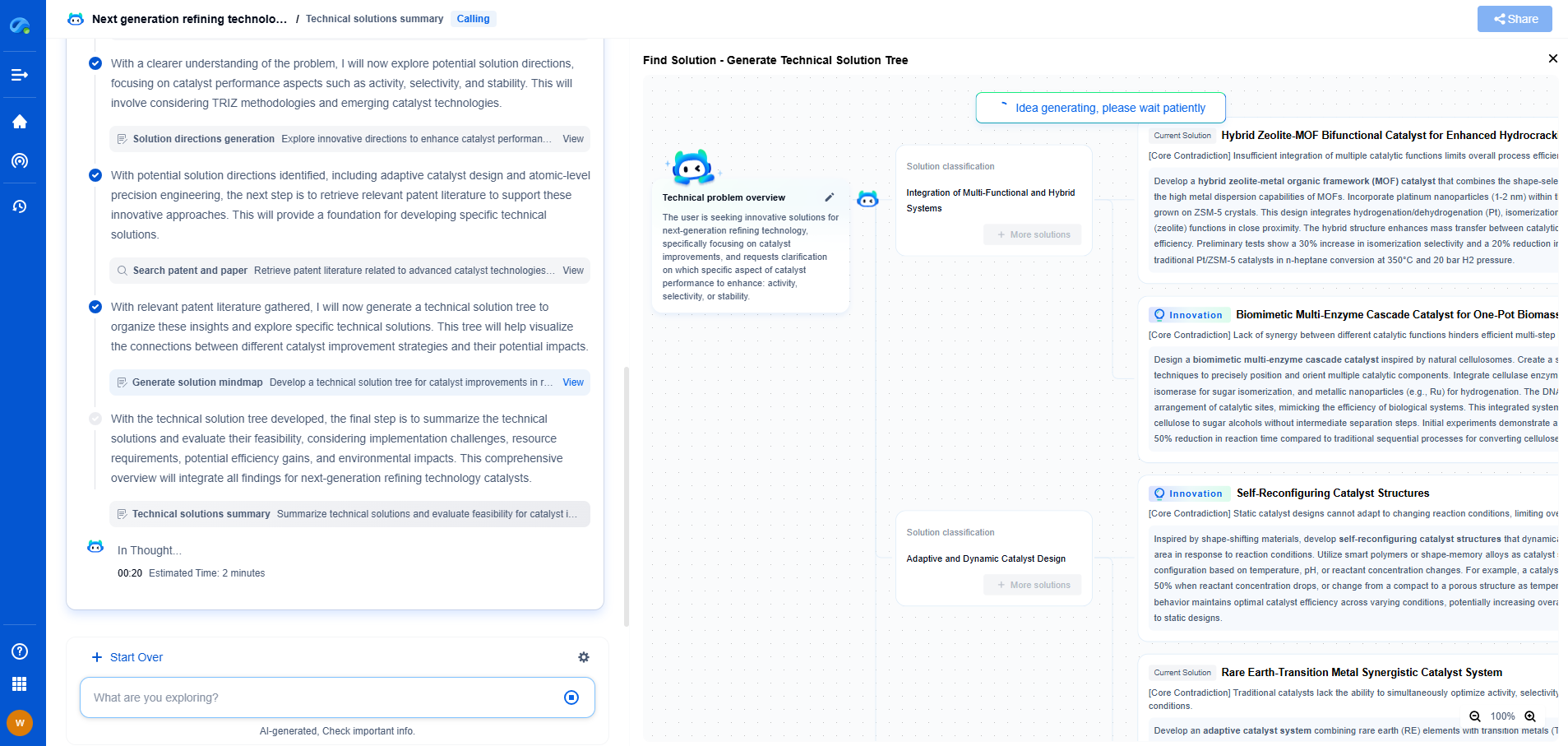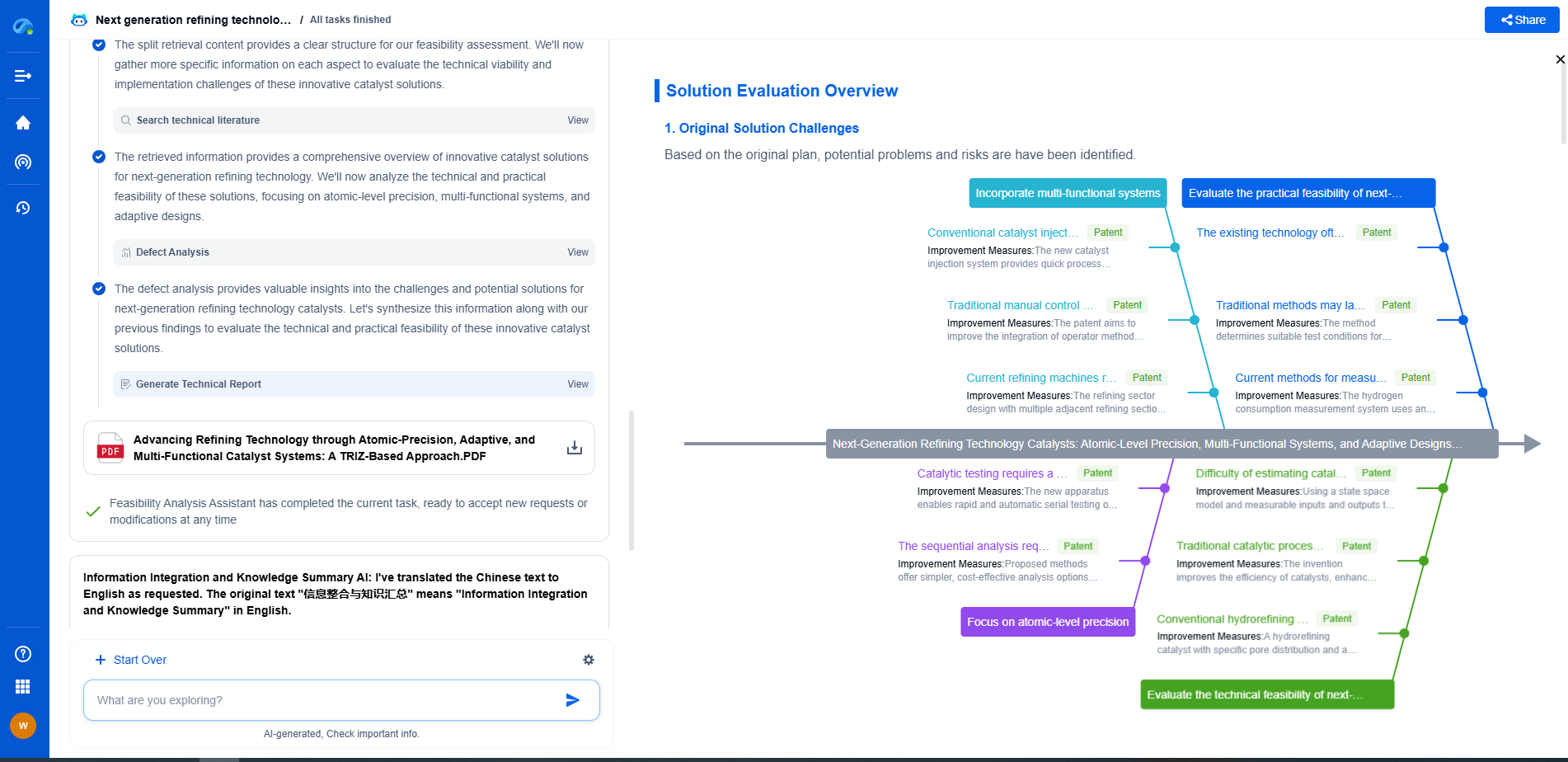LNG Carrier Ships: Perlite Insulation Performance in Marine Environments
JUL 21, 2025 |
Liquefied Natural Gas (LNG) carrier ships play a critical role in the global energy supply chain, transporting natural gas across vast ocean distances in its liquid state. The liquefaction process reduces the volume of natural gas, making it more efficient to transport. However, maintaining LNG at cryogenic temperatures of approximately -162°C (-260°F) throughout the journey is paramount to prevent evaporation and loss of cargo. This necessity underscores the importance of reliable insulation materials that can withstand harsh marine environments.
Understanding Perlite Insulation
Perlite is a naturally occurring volcanic glass that, when heated, expands to form a lightweight, porous material. This expanded perlite is known for its excellent insulating properties, low density, and resistance to moisture, making it an ideal material for use in LNG carrier ships. The insulation's primary role is to minimize heat transfer, ensuring that the LNG remains in its liquid state while the ship travels through varying climates.
Performance of Perlite Insulation in Marine Environments
1. Thermal Insulation Efficiency
Perlite insulation is renowned for its low thermal conductivity, which is vital in reducing heat ingress into LNG tanks. Its cellular structure traps air within the material, creating an effective barrier against heat transfer. This characteristic is crucial in marine environments where temperature fluctuations and exposure to sunlight can increase external heat loads on the LNG tanks. Perlite's natural insulating capabilities help maintain the low temperatures required for LNG storage, reducing the risk of cargo boil-off and enhancing economic efficiency.
2. Durability and Resistance to Moisture
The marine environment poses numerous challenges, including exposure to saltwater, humidity, and temperature extremes. Perlite insulation's resistance to moisture is particularly advantageous in these conditions. Unlike some other insulation materials that may degrade or lose insulating properties when wet, perlite maintains its performance, ensuring long-term reliability. Its inorganic composition makes it resistant to mold, mildew, and deterioration, extending the lifespan of the insulation system.
3. Lightweight Properties and Structural Benefits
Weight is a critical consideration in ship design, as it directly impacts fuel efficiency and overall vessel performance. Perlite's low density reduces the overall weight of the insulation system, contributing to better fuel efficiency and stability of the LNG carrier. Additionally, perlite's structural properties provide adequate protection against mechanical stresses and vibrations encountered during sea voyages, maintaining the integrity of the insulation system.
Environmental and Safety Considerations
The use of perlite insulation aligns with environmental and safety standards in the maritime industry. Perlite is a natural and non-toxic material, making it safe for both humans and marine life. In the event of a tank breach, perlite does not contribute to environmental pollution or pose a health hazard. Moreover, its fire-resistant properties enhance safety by minimizing the risk of fire propagation in the event of an onboard incident.
Challenges and Future Prospects
While perlite insulation offers numerous advantages, ongoing research and development are essential to optimize its performance and address potential challenges. Improvements in perlite processing and application techniques can enhance its insulating properties and further reduce costs. Additionally, innovations in composite insulation systems that combine perlite with other materials may yield even greater benefits in thermal efficiency and structural integrity.
Conclusion
Perlite insulation stands as a key component in the successful operation of LNG carrier ships, offering thermal efficiency, durability, and safety in challenging marine environments. As the demand for LNG continues to grow, the performance of insulation systems will remain a focal point in ensuring the economic viability and environmental sustainability of LNG transport. Continuous advancements in insulation technology and materials promise to enhance the efficiency and reliability of LNG carriers, contributing to a more resilient global energy infrastructure.
As clean energy and decarbonization drive new breakthroughs in hydrogen storage, CO₂ transport, and alternative gas carriers, keeping pace with technical trends and patent activity is critical to staying competitive.
Patsnap Eureka helps innovators in compressed gas storage, high-pressure tank design, gas sensor systems, and pipeline materials accelerate research by offering instant, AI-powered insights into global patents, related technologies, and emerging white spaces.
🚀 Bring speed, precision, and strategic foresight to your innovation and IP decision-making in the gas transport sector—try Eureka today and unlock a smarter path forward.
- R&D
- Intellectual Property
- Life Sciences
- Materials
- Tech Scout
- Unparalleled Data Quality
- Higher Quality Content
- 60% Fewer Hallucinations
Browse by: Latest US Patents, China's latest patents, Technical Efficacy Thesaurus, Application Domain, Technology Topic, Popular Technical Reports.
© 2025 PatSnap. All rights reserved.Legal|Privacy policy|Modern Slavery Act Transparency Statement|Sitemap|About US| Contact US: help@patsnap.com

